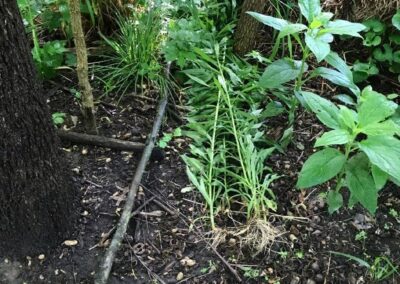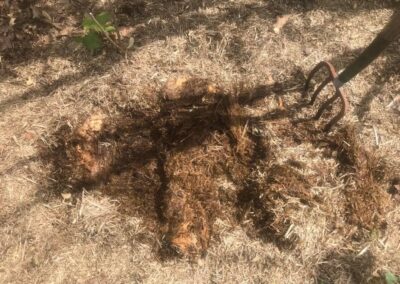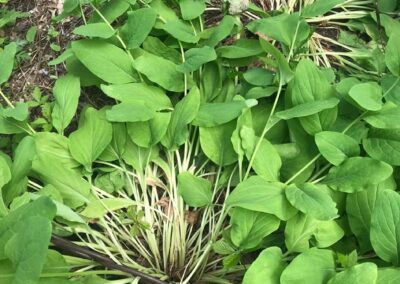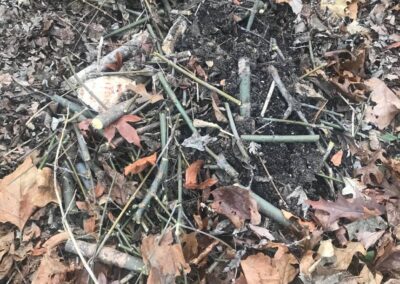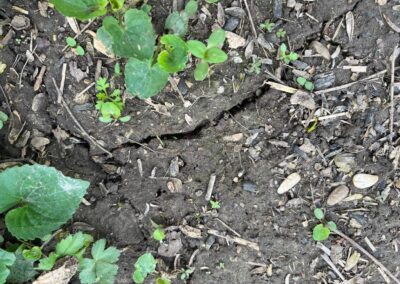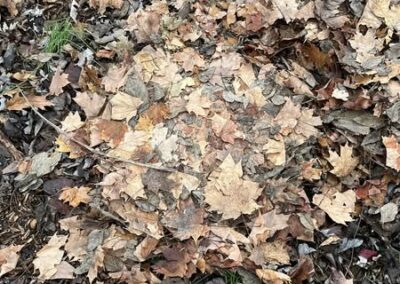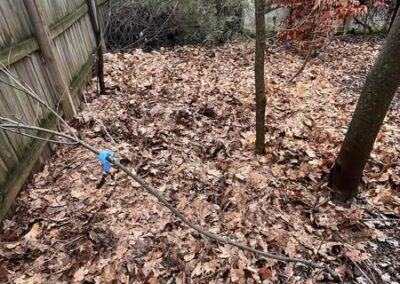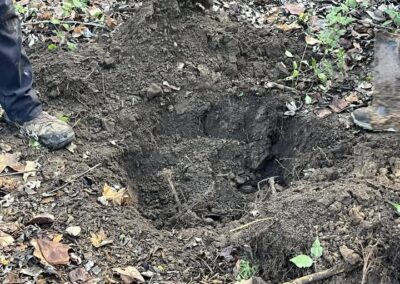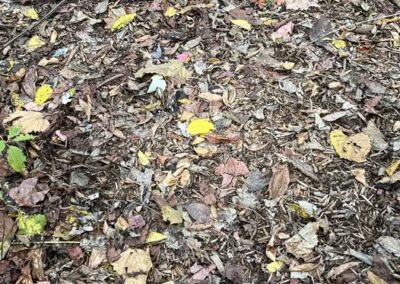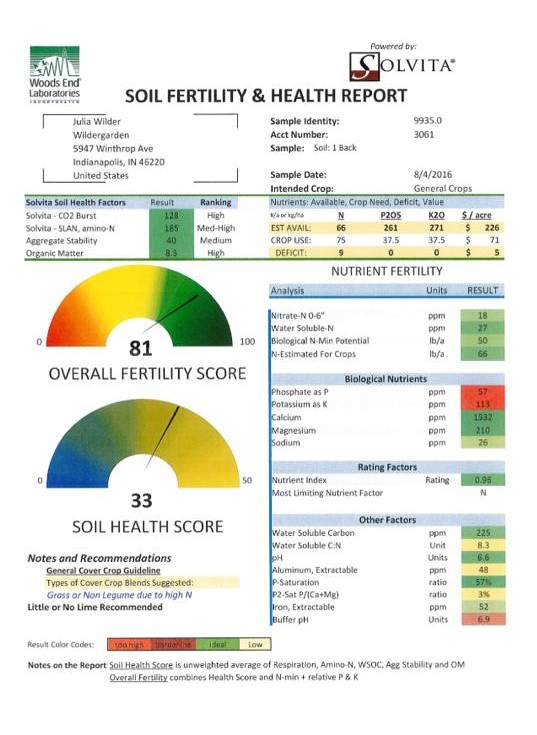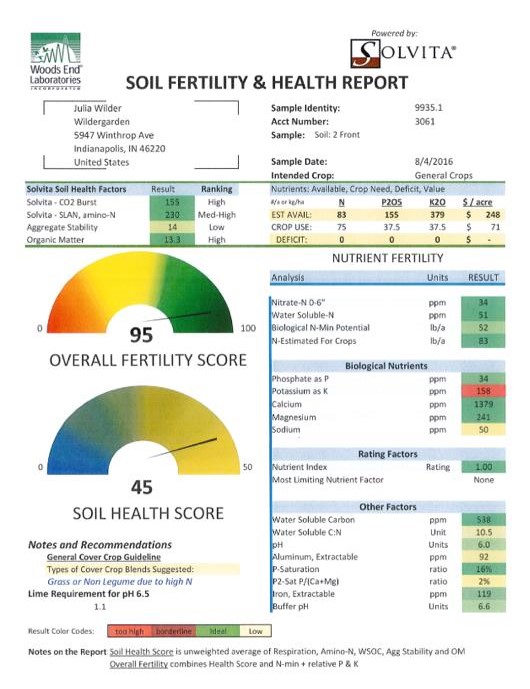SOIL HEALTH
What on earth is “Soil Health?”
When herbaceous plants are removed from the soil, we lay them on the ground where they were pulled, to rot back into the ground.
Herbaceous flowers after wilting
After upright flowering, herbaceous wildflowers wilt into a nutritious ground cover for the soil.
Cracked Miami Soil
Our soil may contain as much as 20% clay, which makes cracks in the soil. This facilitates water and air infiltration, and admits sunlight which can increase soil temperature. Do these sound like positives for passive land restoration?
We add tree leaves to our soil surface each year, especially because many of our trees are still saplings with minimal leaf-drop 1
We add tree leaves to our soil surface each year, especially because many of our trees are still saplings with minimal leaf-drop 2
This is the hole dug for our new American Beech tree. It’s a rare opportunity to look at our soil profile. It excites me to see the dark color associated with healthy forest-origin
What is Soil Health?
Our aim here is to share what we have learned about soil health in the context of urban reforestation, in the hopes that people following in our footsteps can also experience the same benefits that we have seen. At Wildergarden, we use the following measures to assess our level of soil health:
- Diversity of the volunteer plant community
- Carbon Sequestration (the amount of carbon stored in our trees and soil)
- Soil Health & Fertility testing
- In the future, we plan to do water infiltration measurements, and document the permanence of plant debris soil inputs.
How is Wildergarden's Soil Health?
We consider the presence of countless species of plants and animals at Wildergarden, including over 270 trees consisting of 38 different species, to be a clear endorsement of soil health, and therefore also an indicator of the success of our ongoing work here.
Soil Health and Fertility testing is a useful quantitative measurement for tracking soil health over time. We have been fortunate to have had several visits from Kevin Allison, Urban Soil Health Specialist, from the Marion County Soil and Water Conservation District. Kevin took soil probes, which we sent for lab testing. You can see the results of our most recent tests below.
Principles of Soil Health
We know that soil health is important, but how can you tell if your soil is healthy? There is a great deal of information available on improving soil health. We know from published research studies that certain practices by a land steward will generally improve soil health.
Marion County, Indiana does not currently have regulations mandating how to create and maintain soil health conditions in one’s yard. Existing guidelines are voluntary and are generally intended to assist local vegetable gardeners. The government agency providing this current soil education is the local Soil and Water Conservation District (MCSWCD).
The Soil and Water Conservation Districts (SWCD) are administered in all 92 Indiana counties, under Indiana state law that originated as 1937 model legislation sent to each U.S. state by President Franklin Roosevelt after the Dust Bowl disaster.
The following descriptions of soil health and land conservation are published on the MCSWCD website. There are four principles for regenerating soil health. They are:
- Disturb the soil as little as possible.
- Keep the soil covered as much as possible.
- Maximize biodiversity by using plant rotation and cover crops.
- Provide continuous living roots by keeping plants growing year-round.
The Wildergarden system of ecological restoration meets these basic conditions. We excel in the category of biodiversity, and most of our plants are perennials, which reduces the need for tillage (soil disturbance).
The key improvements for land and people are noticeable when all four soil health principles are practiced together. The results include increased soil organic matter, increased water infiltration, increased soil water-holding capacity, increased soil aggregate stability, and enhanced and diversified soil biology. We experience each of these qualities at Wildergarden and increasingly seek to document them.
Conservation Practices and Soil Health
The MCSWCD website also specifically recommends the following conservation practices, which are strategies targeted to building soil health. They are:
- growing cover crops;
- mulching;
- crop rotation;
- no tillage or low tillage;
- nutrient management, and
- native plantings for beneficial insects (including pollinators).
At Wildergarden we use similar strategies adapted to our specific mission of native land restoration.
Soil Health and Fertility Testing
A Soil Fertility & Health Report can be used to gauge the overall health of your soil. It is a great indicator of how successful your ongoing efforts have been!
Woods End Laboratory has been offering soil fertility testing based on the “physical-chemical-biological” model since the 1980’s.
After a couple decades of soil care, succession, and reforestation, we sent samples of the front and back yard to Woods End. This is a mini-description of life on this little earth fragment called Wildergarden. Our results confirm the effectiveness of our methods over an extended period of time!

